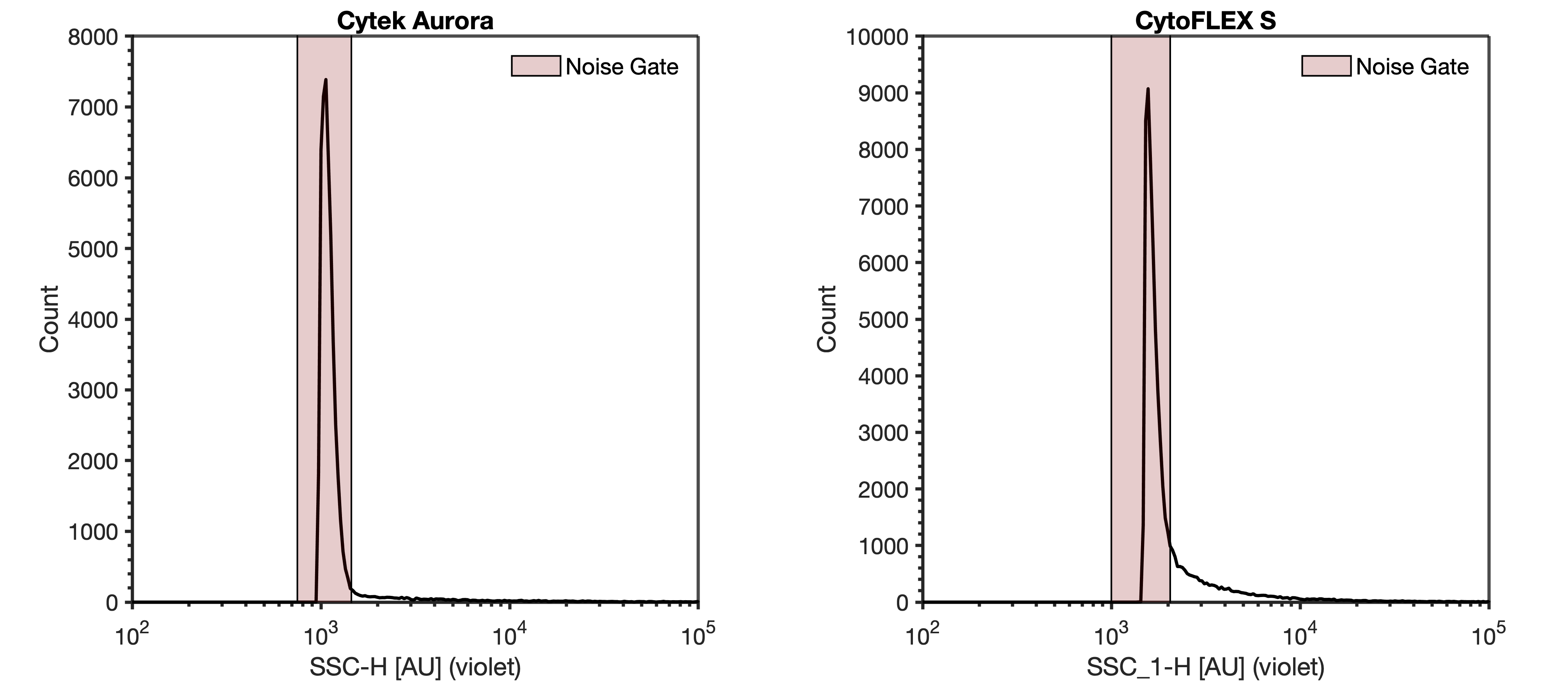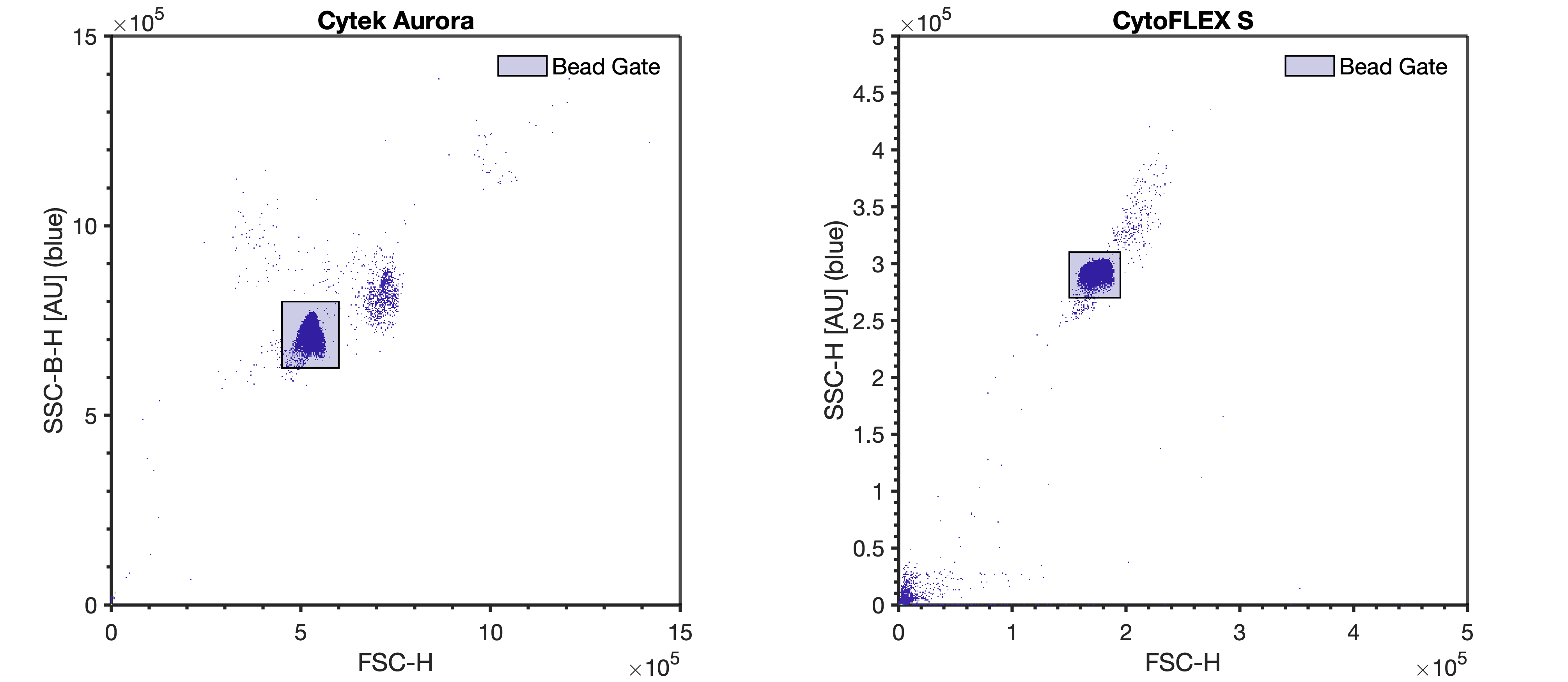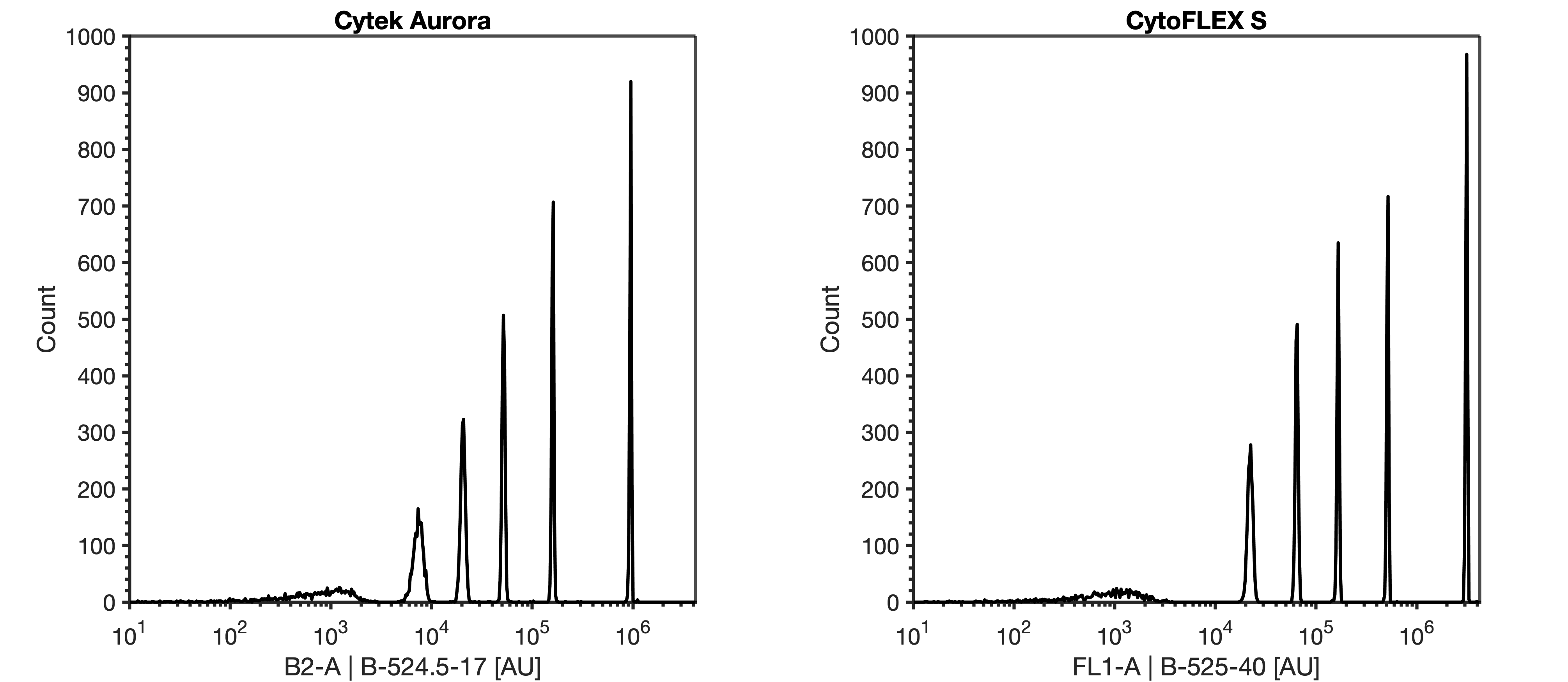Resource 2: Fluorescence Detector Setting Incrementation for FCMPASS
Joshua A Welsh, Sean M Cook, Jennifer Jones
Disclaimer
This protocol summarizes key steps for a specific type of method, which is one of a collection of methods and assays used for EV analysis in the NCI Translational Nanobiology Section at the time of submission of this protocol. Appropriate use of this protocol requires careful, cohesive integration with other methods for EV production, isolation, and characterization.
Abstract
Flow cytometry (FCM) is a common extracellular particles (EPs), including viruses and extracellular vesicles (EVs), characterization method. Frameworks such as MIFlowCyt-EV exist to provide reporting guidelines for metadata, controls, and
data reporting. However, tools to optimize FCM for EP analysis in a systematic and quantitative way are lacking. Here, we demonstrate a cohesive set of methods and software tools that optimize FCM settings and facilitate cross-platform comparisons for EP studies. We introduce an automated small particle optimization (SPOT) pipeline to optimize FCM fluorescence and light scatter detector settings for EP analysis and leverage quantitative FCM (qFCM) as a tool to further enable FCM optimization of fluorophore panel selection, laser power, pulse statistics, and window extensions. Finally, we demonstrate the value of qFCM to facilitate standardized cross-platform comparisons, irrespective of instrument configuration, settings, and sensitivity in a cross-platform standardization study utilizing a commercially available EV reference material.
Steps
Sample preparation
Vortex QbSure bottle on a high setting for 0h 0m 5s.
Pipette 500µL of DPBS to two FACS tubes. Label one tube 'DPBS" and the second tube 'Beads'.
Add 3 drops of QbSure beads to the 'Beads' tube and vortex for 0h 0m 5s.
Cytometer Setup
Ensure cytometer is clean and that -Height and -Area statistics are set to be collected on all parameters and that all parameters are on.
On the Cytek Aurora, set window extension to 0. On the CytoFLEX platform turn on 'High Acquisition Mode'.
Create a pseudocolor plot with FSC-H on the X-Axis and (488 nm) B-SSC-H on the Y-Axis and make sure both parameters are being plotted on a linear-scale.
Create a histogram plot with (405 nm) V-SSC-H on the X-Axis and make sure it is plotted on a log-scale.
Set the cytometer triggering threshold to (405 nm) V-SSC-H. All samples should be acquired with the lowest flow rate, typically ~10-15 µL min-1. -1.
Acquire the DPBS tube while viewing the histogram plot from . Adjust the detector gain or trigger threshold until the instrument noise is being acquired at ~1000 events/sec. The instrument noise floor is distinct from detected background events in sheath as it has a sharp increase. In a system with debris there may be a tail that elongates out of this this sharp peak.

Recording this noise is not necessary as this step is identifying optimal settings.
Acquire the 'Beads' tube from . Using the plot from adjust the FSC and B-SSC gain until the single bead population is clearly visible and can be easily gated from the doublet population to the top right of it. Use the Violet SSC trigger settings identified in

Creating a gate around the single bead population named 'Bead Gate';
Adjust the stopping criteria of the instrument to record until 10,000 events are acquired on 'Bead Gate' drawn in .
Performing Voltration
Voltration can now be performed by recording the 'Beads' tube at multiple fluorescent detector gains, leaving the trigger threshold and light scatter gains consistent. It is recommended that a recording of at least 10 fluorescent detector settings is taken. Including more increments within a voltration will result in being more confident of the subsequent optimal detector settings.Acquisition Template.xlsx

To ensure accurate data analysis, the brightest bead must be visible on at least two of the selected gains.
Fluorescent channels can be cross calibrated to determine lower limit of detection for the channel in calibrated units in the FCMPASS software. A cross calibration between the desired MESF bead and QbSure beads should be acquired at a fluorescent detector gain where all MESF bead populations are on-scale and fully resolved from the noise.

